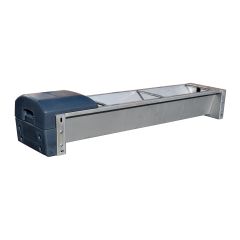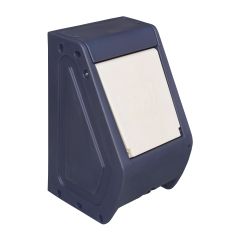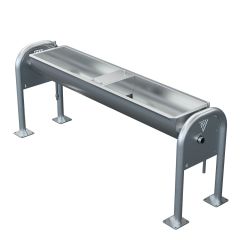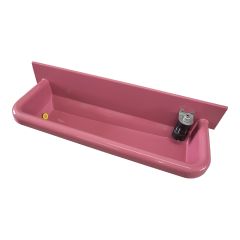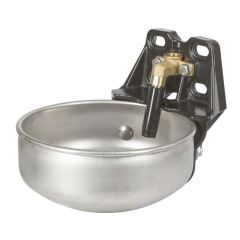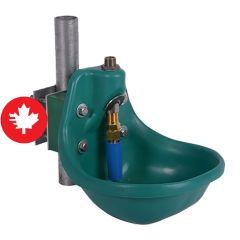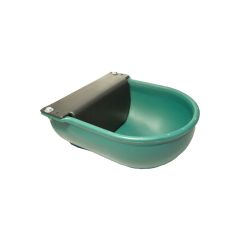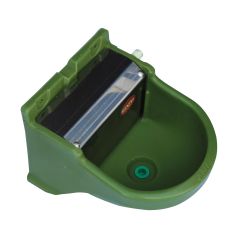Choosing the right livestock watering system is crucial for maximizing the productivity and growth of your herd. A well-designed, properly positioned, and functional waterer can directly impact animal health and well-being. But how do you choose the right one?
Here are the key factors to consider when selecting the perfect watering solution for your farm.
Age, type and number of animals
An animal's water requirements vary depending on its species, age, diet, weight, and production type. Waterers for cattle pigs, or poultry are designed to meet the specific needs of each type of livestock.
For example, a cow can consume up to 40% of its daily water intake immediately after milking. Quick and easy access to a water source is therefore essential for optimal animal productivity.
Refer to table to adjust your selection according to your herd.
Waterers: Selection guide
| Material | Trough | Valve | Flow at 45 PSI | Water inlet | BMR code | Calf | Dairy cow | Cattle | Horse | Sheep | Goat | Pig |
|---|---|---|---|---|---|---|---|---|---|---|---|---|
| Stainless steel | 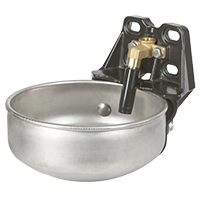 |
Tube | 20 L/min | 1/2 in. female overhead or underneath | 081-4980 | *** | ** | ** | ||||
| Stainless steel | 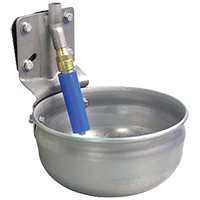 |
Tube | 22 L/min | 1/2 in. female overhead | 018-5851 | *** | ** | ** | ||||
| Galvanized | 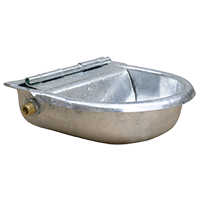 |
Float | 4 L/min | 1/2 in. male both sides | 028-0989 | ** | *** | *** | *** | *** | ||
| Polyethylene | 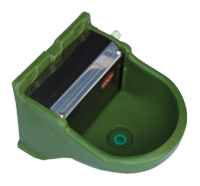 |
Float | 15 L/min | 1/2 in. male right side | 064-5052 | ** | *** | *** | *** |
| Material | Trough | Valve | Flow at 45 PSI | Water inlet | BMR code | Calf | Dairy cow | Cattle | Horse | Sheep | Goat | Pig |
|---|---|---|---|---|---|---|---|---|---|---|---|---|
| Fiberglass | 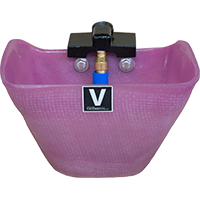 |
Tube, not included | 22 L/min | 1/2 in. female overhead or underneath | 020-2477 | *** | ** | |||||
| Fiberglass | 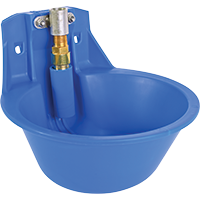 |
Tube | 22 L/min | 1/2 in. female overhead | 001-4081 | *** | ||||||
| Polypropylene | 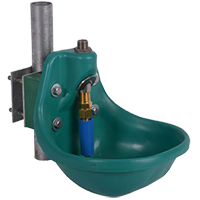 |
Tube | 14 L/min | 1/2 in. male overhead | 018-5860 | ** | ** | *** | *** | ** | ** | |
| Polypropylene | 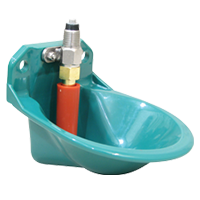 |
Tube | 6,2 L/min | 1/2 in. male overhead | 029-5972 | *** | *** | *** | ||||
| Polypropylene | 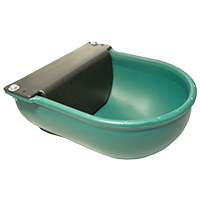 |
Float | 6 L/min | 1/2 in. male both sides | 018-5879 | ** | *** | *** | *** | ** |
| Matériau | Acier inoxydable | Acier inoxydable | Acier galvanisé | Polyéthylène |
| Abreuvoir |  |
 |
|
 |
| Soupape | Tube | Tube | Flotte | Flotte |
| Débit d'eau | 20 L/min | 22L / min | 4 L/min | 15 L/min |
| Entrée d'eau | 1/2 po femelle par le dessus ou le dessous | 1/2 po femelle par le dessus | 1/2 po mâle par les 2 côtés | 1/2 po mâle par le côté droit |
| Code BMR | 081-4980 | 018-5851 | 028-0989 | 064-5052 |
| Veau | ** | ** | ||
| Vache laitière | *** | *** | ||
| Bovin | ** | ** | ||
| Cheval | ** | ** | *** | *** |
| Mouton | *** | *** | ||
| Chèvre | *** | *** | ||
| Porc | *** |
| Matériau | Fibre de verre | Fibre de verre | Polypropylène | Polypropylène | Polypropylène |
| Abreuvoir |  |
 |
 |
 |
 |
| Soupape | Tube, non incluse | Tube | Tube | Tube | Flotte |
| Débit d'eau | 22 L/min | 22 L/min | 14 L/min | 6,2 L/min | 6 L/min |
| Entrée d'eau | 1/2 po femelle par le dessus ou le dessous | 1/2 po femelle par le dessus | 1/2 po mâle par le dessus | 1/2 po mâle par le dessus | 1/2 po mâle par les 2 côtés |
| Code BMR | 020-2477 | 001-4081 | 018-5860 | 029-5972 | 018-5879 |
| Veau | ** | *** | ** | ||
| Vache laitière | *** | *** | ** | ||
| Bovin | *** | ||||
| Cheval | ** | *** | *** | ||
| Mouton | ** | *** | *** | ||
| Chèvre | ** | *** | *** | ||
| Porc | ** |
Selecting the best materials for your waterers
When choosing materials for your livestock waterers, factors like durability, cost, and maintenance ease play a significant role. Let's explore the primary options:
Stainless steel
Easy to clean and sanitize. It doesn't rust or deform. This durable material is less expensive than other options.
Plastic (thermoplastic or polyethylene)
Ideal for tight budgets. Easy maintenance.
Galvanized steel
Its sturdiness makes it a reliable and durable choice, even in the hardest environments. Easy to clean.
Fiberglass
Resistant to chemicals, impacts, and pests. Easy to clean.
Choose a material that suits your farming needs and budget.
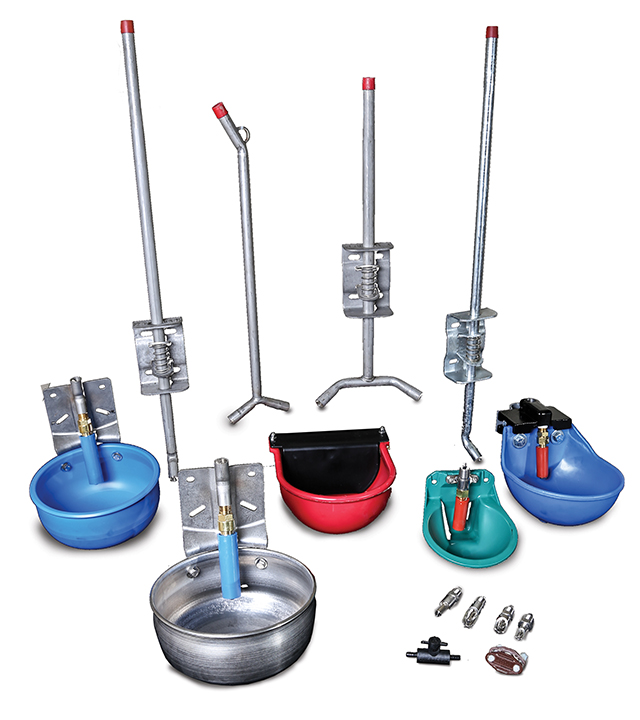
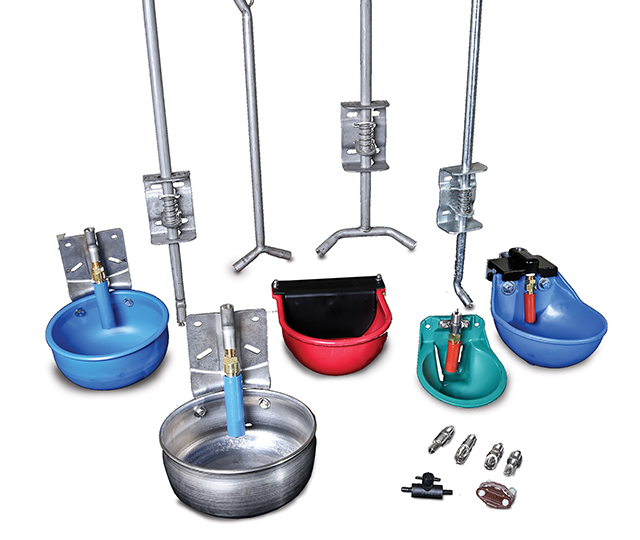
What water flow rate is recommended for a waterer?
The water flow rate directly impacts your herd's ability to meet their water needs. Here are the recommended flow rates for different types of waterers:
Tube waterer: 14 to 18 liters per minute
Constant-level or group waterer: 32 to 42 liters per minute
According to official recommendations, a dairy cow consumes an average of 75 liters of water per day, spread over 7 to 8 drinks of 10 to 15 liters per minute. Therefore, it is essential to choose a waterer model that meets this requirement.
Pro tip : Connect your waterers to your water supply to ensure a consistent flow rate and optimal pressure.
Individual or group waterer?
The choice between individual and group waterers depends on the type of stall.
Individual waterer: Suitable for tie stalls. Designed for a single animal at a time.
Group waterer: Ideal for free stalls. Allows several animals to drink simultaneously. Equivalent to two watering points.
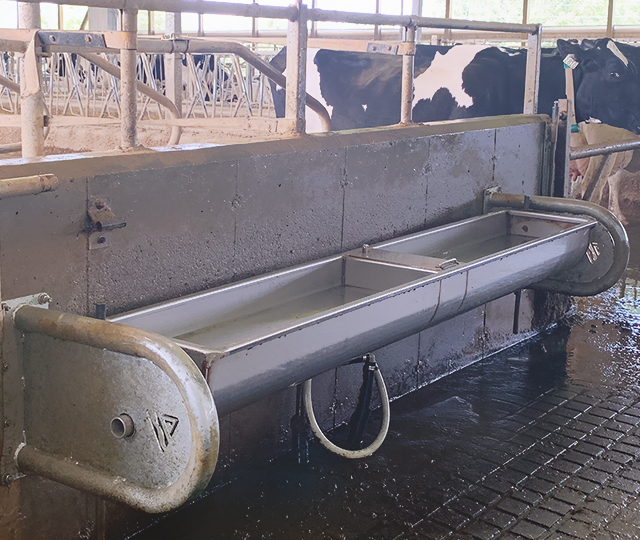

How many watering points and where to set them up
The number of waterers in a livestock building should be adjusted to the size of the herd and the type of livestock.
For example, in free-stall barns, one watering point is recommended for every ten cows.
Waterers should be installed in easily accessible locations that do not obstruct the movement of the herd. Avoid concentrating animals around a single point to prevent bottlenecks.
It is best to install watering points at the exist of the milking parlor and near the feed troughs. Ideally, the installation should allow the animal to drink without blocking its herdmates, while remaining within the scraping area.
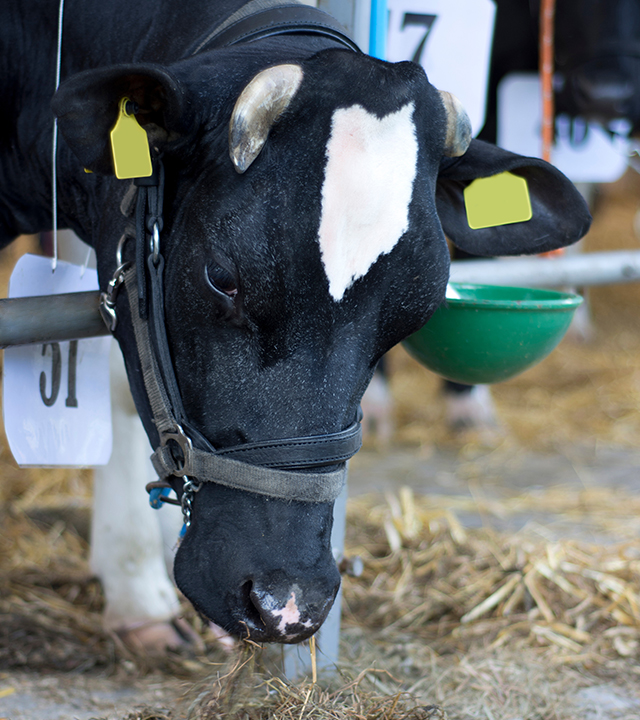
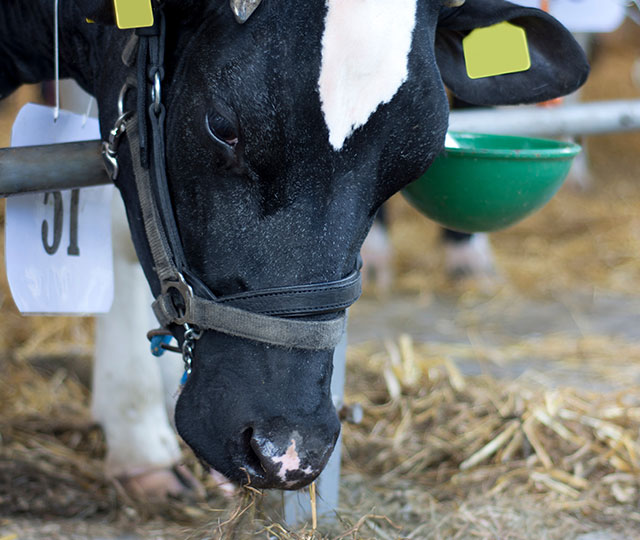
How high should a waterer be?
The height of the waterer will depend on the type of animal. Position the waterer at a height that allows the animal to comfortably immerse its muzzle to drink.
For example, for a dairy cow, the water level should be between 70 to 80 cm (28 to 32 in.) from the ground.
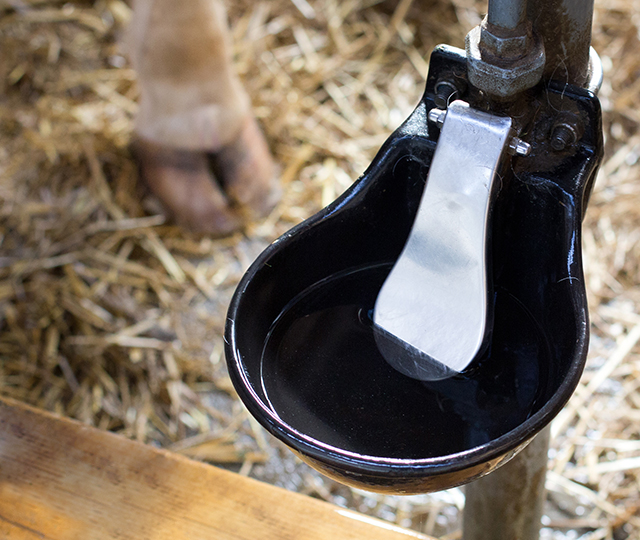

Visit bmr.ca to explore a wide range of individual and group waterers, or speak with an in-store expert for personalized advice.
Best-sellers
Shop by category
Les renseignements de cet article sont présentés à titre informatif seulement et peuvent ne pas être applicables dans certaines situations ou facteurs particuliers. En cas de doute, adressez-vous à un expert du BMR de votre région.
